Alice's Adventures in Wonderland (Wheeldon/Talbot/Royal Ballet)
Since it was first published in 1865, Lewis Carroll's 'Alice's Adventures in Wonderland' has not just been a mainstay of English literature, but has had a huge influence on the English language itself. This sort of power was bound to have had an influence on creative types, and with at least 19 films series (the first two made over 100 years ago) and TV series, innumerable stage adaptations from pantomime to operas and ballets, it's continuing to grip the imagination of not just the artistic world, but everyone who comes across the story, at whatever age.
This new addition to the Alice canon was first produced (in conjunction with the National Ballet of Canada) at the Royal Opera House almost exactly a year ago, and became an instant hit with audiences, if not always the most strict of critics. It was chosen to for broadcast twice on the BBC in 2011, including the coveted BBC2 'art' slot in the afternoon on Christmas Day (and considering everything like this is being pushed onto non-mainstream channels this was quite a coup). It is being produced again this month, and before anything else is said, really does need to be seen to be seen.
The story, with some acceptable theatrical liberties, is taken from the first book, and so there's not the 'mix up' of characters from ..Wonderland and Through the Looking Glass… , which means we're without Tweedle Dum, Tweedle Dee, the Walrus and the Carpenter and Humpty Dumpty, but we do have some incredible depictions of other favourite characters. A slightly awkward top-and-tailing of the story as we're introduced to the characters in a way Carroll didn't envisage doesn't however detract from the overall magical effect.
There are many things to recommend this production, so I'll start with the music, as there are very few ballets without it of course.
Joby Talbot has produced a thumping score (quite literally so with the amount of percussion employed) in collaboration with Christopher Austin, and has managed to create something which grabs the ear from the start and rarely, if ever, lets go. When the opening clock motive begins you can instantly tell we're not probably going to be hearing the most original, or indeed contemporary score, yet that's never a problem, as the sound world he creates is perfect for the fantastical elements in the story. There are moments of great familiarity too, when you think you can hear chucks of Pictures at an Exhibition, Carnival of the Animals and the Tritsch Tratsch Polka,and the scene where the Red Queen tries desperately to reproduce the famous Adage from Sleeping Beauty demands a pastiche of Tchaikovsky's music, which Talbot carries off very cleverly. Most importantly, it all adds up to a score which you can dance to.
The orchestra play the work brilliantly, with some stunning solo work throughout (especially in the case of the violin) and Barry Wordsworth, who has a natural affinity with ballet music, pushes things along with a huge amount of skill and energy.
Theatrically, it is a work of genius, being a great mix of new technologies and good old-fashioned theatrical trickery that, with the right lighting, can create a good few amazed gasps from the younger viewer (and some older ones too). Plenty of trapdoor action is interspersed with some quick costume changes, great scenes of Cheshire Cat assembling/disassembling and some particularly effective back-projections into which the characters effortlessly disappear, becoming part of the 21st century digital age in this 19th century story.
On stage, all attention is naturally drawn to Alice herself, and in a role specifically created for her, Lauren Cuthbertson is a delight. Her grown up and child sides are shown in equal measure (the character is older than the young girl in the original) and there's a very 'English' manner about her whole persona that is particularly charming.
Elsewhere, we have Sergei Polunin as Jack/The Knave of Hearts, showing precisely why he was such as draw for the crowds, despite the fact that the choreography isn't necessarily going to be as revered as the Russian masters of the 19th century. It was certainly a great loss to the Royal Ballet when he walked out a short while ago.
Speaking of choreography, it was a very clever move to envisage the Mad Hatter as a tap dancer, and Steven McRae is well up to the job of 'hoofing' around the stage in the role, although it was times like this when you realise that there's something missing from a wordless interpretation of the story. The words. Carroll's wonderful way with the language is of course missing entirely, and we can only experience an interpretation of them in the very loosest sense, but it's far better having none at all than the heavily edited version you would most likely experience in an opera, or even a feature length film on the same subject.
Zenaida Yanowsky as the Mother/Queen of Hearts creates fearsome characters for both roles, and is probably the highlight of the ballet during the Tchaikovsky/Petipa pastiche. Just bordering on the absurd, she has the stage presence to retain enough dignity and class to carry off the pantomime-style villainess with her reputation intact.
Simon Russell Beale's Duchess is a suitably revolting character that borders on the 'pantomime dame' yet effuses a horrific sadistic quality that is the stuff of childhood nightmares. An interesting casting choice, he is certainly quite capable of carrying off the steps given to him, and judging by his comments in the accompanying film, had a whale of a time throwing himself into a new form of stage acting.
The film ('Being Alice') which comes along with the performance is a very satisfying half-hour look behind the scenes with all the major players taking part, and includes some quite candid opinions about how the work itself could develop in the future. A huge (70 minutes or so) first act could well be cut down, however it's something that is quite watchable and never really outstays its welcome.
Sound and vision are excellent, with the huge orchestral forces sounding clear and focused and the lighting and colours on stage standing out quite superbly.
If there is anything to 'complain' about, and this feeling came a little while after watching the DVD a few times, it's the fact that the music and staging almost push the choreography into the third most interesting aspect of the show, and that seems a little odd for a ballet. Wheeldon certainly produces some very catching character pieces and ensemble routines yet there's not much on offer for those who enjoy long, lyrical passages of dance. The duet between Alice and Jack in Act II is certainly the closest you get to such as passage, and it's very effective and moving, yet perhaps comes a bit too late for those who may have an expectation of more of the same.
Overall however, this is a thoroughly enjoyable DVD and is highly recommended.
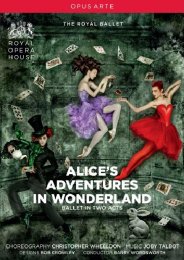
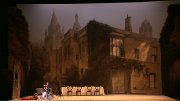
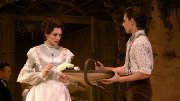
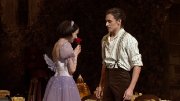
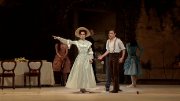
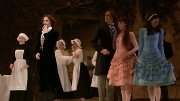
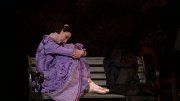
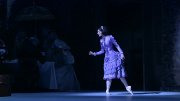

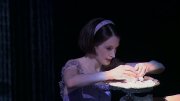

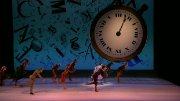
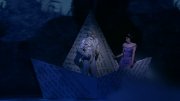
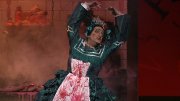

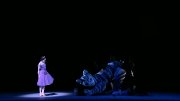
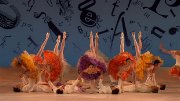
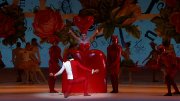
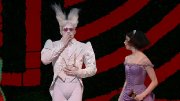
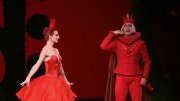

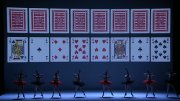
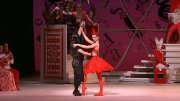
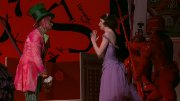
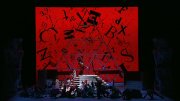
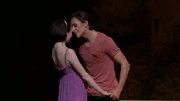
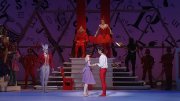

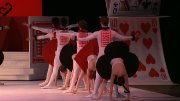
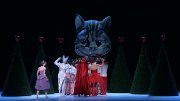







































Your Opinions and Comments
Be the first to post a comment!